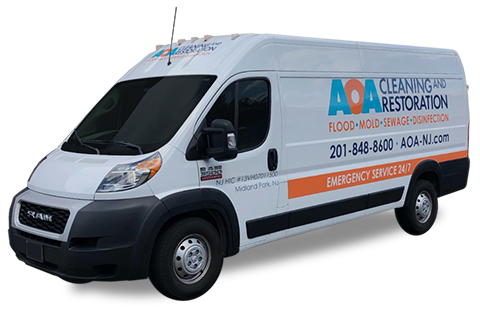Water damage can cause serious harm to your property, leaving behind devastating effects if not timely resolved. In some cases, water damage might be irreversible, leading to severe damage that can be difficult to restore. So how do you know if water damage is permanent?
In this section, we will guide you through the process of assessing the extent of water damage, helping you determine if it is permanent or if it can be repaired.
Key Takeaways:
- Water damage can be permanent or reversible, depending on the severity of the damage.
- Assessing the extent of water damage is essential for determining whether the damage is permanent.
- Professional help may be necessary for accurate evaluation and repair of water damage.
- Immediate action is crucial to prevent further damage and minimize repair costs.
- Regular maintenance and inspection can help identify water damage early on, minimizing the potential for permanent damage.
Signs of Irreversible Water Damage
If you’re dealing with water damage in your property, it’s essential to note that not all damage is reversible. Sometimes, the damage may be too severe, making repairs impossible, and replacement necessary. Knowing the signs of irreversible water damage is crucial in understanding the extent of the damage and taking necessary measures to address the situation.
Here are some of the common signs of irreversible water damage:
- Warping or Buckling Floors: When wooden floors absorb water, they begin to warp or buckle, making the damage irreversible.
- Mold Growth: If water damage goes untreated, it provides the ideal conditions for mold growth. Mold is challenging to remove and can cause health hazards, making it a sign of irreversible damage.
- Swollen Doors and Windows: Water damage can cause wooden doors and windows to swell, making it hard to open and close them, which usually means the damage is irreversible and needs replacing.
- Peeling Paint and Wallpaper: When water infiltrates walls, it damages the paint or wallpaper, causing it to peel and flake. Repairing this damage is difficult, making it irreversible in many cases.
If you notice any of these signs of irreversible damage, it’s essential to act quickly to prevent further damage.
Assessing the Extent of Water Damage
Assessing the extent of water damage is crucial in determining the necessary repairs and treatments. Start by examining the affected area and identifying the type of water damage present. There are three types of water damage:
- Clean Water Damage: This type of damage occurs when clean water leaks from a source. It poses no health risks but can cause serious damage if left untreated.
- Grey Water Damage: This type of damage occurs when slightly contaminated water leaks from a source. It may contain chemicals or other contaminants that can pose health risks if ingested or make contact with skin.
- Black Water Damage: This type of damage occurs when highly contaminated water, such as raw sewage, leaks from a source. It is hazardous to health and requires immediate professional attention.
Next, evaluate the scope of the damage. Check the walls, ceiling, and floor for discoloration, warping, or other signs of damage. Take note of any foul odors or mold growth in the area. Using a moisture meter, test the moisture levels in the affected surface and surrounding areas to determine if there is any hidden damage. Make sure to document everything, taking pictures and videos as necessary.
Finally, use your assessment to determine if the damage can be repaired or is irreversible. In cases of irreversible damage, it may be necessary to replace entire sections of the affected area. Consulting with a professional water damage restoration company can help determine the best course of action for your specific situation.
Identifying Structural Damage
Water damage can cause structural damage to your property, and it’s essential to identify and address it as soon as possible.
A common sign of structural damage due to water infiltration is sagging or uneven floors. When exposed to water, the subfloor can weaken and buckle, leading to noticeable changes in the floor level. Walls and ceilings can also show signs of water damage, including cracks, bulges, and discoloration. Additionally, if you notice that doors and windows are difficult to open or close, it may be due to water damage and resulting shifts in the structure.
It’s crucial to identify structural damage quickly, as ignoring it can lead to further issues and even collapse in extreme cases. We highly recommend hiring a professional to inspect your property and evaluate the extent of the damage thoroughly.
By taking swift action and identifying structural damage caused by water infiltration, you can prevent permanent damage and ensure the safety of your property.
Preventing Further Damage
Water damage can quickly become irreversible, causing significant damage to your property and belongings. Taking action to prevent further damage is crucial to protect your home and ensure a thorough restoration. Follow these expert tips to prevent further damage:
- Turn off the water source: If you notice a leak or water infiltration, turn off the water source immediately to prevent further damage.
- Remove standing water: Use a wet/dry vacuum or mop to remove standing water from affected areas to prevent mold and mildew growth.
- Dry out affected areas: Use fans and dehumidifiers to dry out affected areas quickly, reducing the risk of permanent damage.
- Protect belongings: Move valuable items to a safe, dry location to prevent damage and avoid costly replacements.
By following these tips, you can minimize the risk of permanent damage or recurring issues in case of water infiltration. Remember that time is of the essence when dealing with water damage, and prompt action is key to preventing further damage and ensuring an efficient restoration process.
Repairing Water Damage
Repairing water damage is a crucial step towards restoring your property and preventing further damage. It’s important to act fast, as delaying repairs can lead to more severe and costly issues. Here are some methods and techniques for repairing water damage:
| Method | Description |
|---|---|
| Drying out affected areas | Using dehumidifiers and fans can help remove excess moisture from the air and surfaces, preventing the growth of mold and mildew. It’s important to thoroughly dry out all affected areas before proceeding with any repairs. |
| Fixing structural issues | If water damage has caused structural issues such as warped floors or walls, it’s important to enlist the help of a professional contractor. They can assess the damage and make necessary repairs to preserve the integrity of your property. |
| Cleaning and sanitizing | Water damage can introduce harmful bacteria and contaminants into your property. Thorough cleaning and sanitizing of affected areas can help eliminate these hazards and ensure a safe living environment. |
| Restoration | If the damage is extensive, restoration services may be needed to fully restore your property. This can include repairing or replacing damaged materials and rebuilding structural components. |
By following these methods and seeking professional help when needed, you can effectively repair water damage and restore your property. Remember, repairing water damage promptly is crucial to preventing further damage and ensuring the safety and integrity of your home.
Conclusion
Water damage can be a significant issue for any property owner, and it is crucial to take action as soon as you suspect there may be an issue. By identifying the signs of irreversible water damage and assessing the extent of the damage, you can determine if the damage is permanent and take appropriate measures to prevent further damage.
Remember to keep an eye out for signs of structural damage, as this can be an indication of permanent damage that requires immediate attention. By following the expert tips for water damage prevention and seeking professional help for repairs, you can effectively restore your property and undo the damage caused by water.
Early detection and prompt action are key to minimizing the long-term impact of water damage on your property. By staying informed and taking appropriate steps to prevent and repair damage, you can ensure the safety and longevity of your property for years to come.
FAQ
Is water damage permanent?
Water damage can be permanent depending on the severity and extent of the damage. It is important to assess the damage to determine if it can be repaired or if it is irreversible.
What are the signs of irreversible water damage?
Some common signs of irreversible water damage include mold growth, stains or discoloration on walls or ceilings, warping or swelling of materials, and a musty odor. These signs indicate that the water damage may have caused structural or long-lasting damage.
How can I assess the extent of water damage?
To assess the extent of water damage, you can start by visually inspecting the affected areas for visible signs of damage. You can also use a moisture meter to measure the moisture content in the affected materials. If you are unsure, it is best to consult with a professional water damage restoration specialist.
How do I identify structural damage caused by water?
Structural damage caused by water can manifest in various ways. Look out for sagging or bowing walls, cracks in the foundation or walls, uneven floors, or doors and windows that no longer close properly. If you notice any of these signs, it is important to have a professional assess the damage and determine the appropriate repairs.
How can I prevent further damage from water infiltration?
To prevent further damage from water infiltration, it is crucial to address the source of the water and stop it from entering your property. You should also remove any standing water, dry out affected areas, and ensure proper ventilation. It may be necessary to hire a professional for more extensive repairs and to implement long-term water damage prevention measures.
How can I repair water damage?
The process of repairing water damage depends on the extent and severity of the damage. It may involve drying out affected areas, removing damaged materials, fixing structural issues, and restoring the property to its pre-damage condition. It is advisable to seek the help of a professional water damage restoration company to ensure thorough and effective repairs.




















